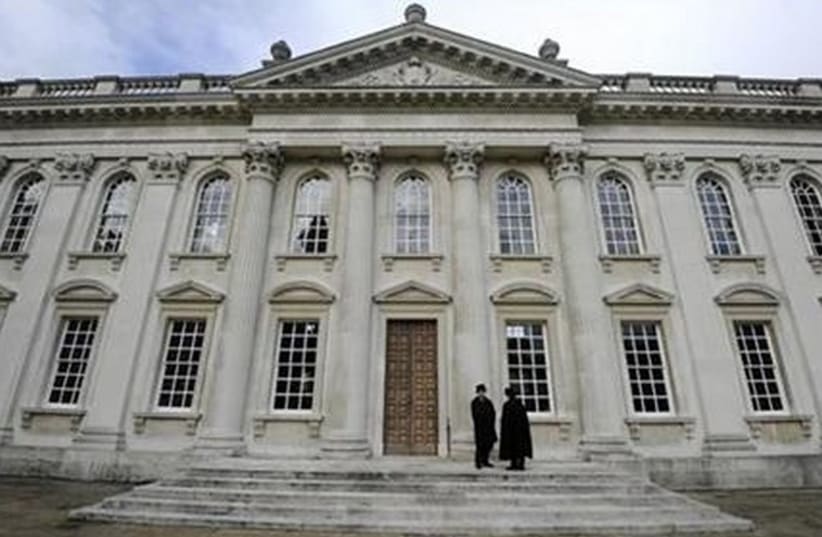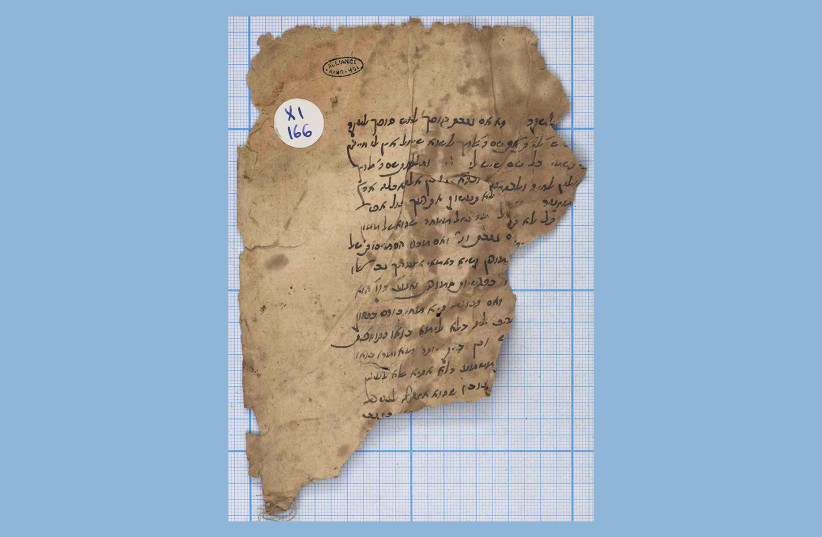The name Stefan Reif is forever associated with the genizah collection held by Cambridge University. When working as an assistant professor in an obscure Philadelphia academic institution in 1973, Reif learned that applications were being solicited for the post of assistant under-librarian to be responsible for the Taylor-Schechter Genizah Collection at Cambridge University Library, a position also involving some teaching at the Faculty of Oriental Studies. He applied, was accepted, and the rest, as they say, is history.
A genizah (“hiding place” in Hebrew), is a depository for sacred Hebrew manuscripts and documents that are no longer usable but must not be destroyed because they contain God’s name. A vast collection stored in Cairo’s Ezra Synagogue, built in 893, contained secular as well as religious material. It was discovered in 1753 by a German writer, who mentioned it in a book published 20 years later.
Over the next century and a half, various visitors to the genizah lifted material from the collection, but the unique importance of the Cairo Genizah became apparent only in 1896, when two Christians removed some documents and brought them to Solomon Schechter, then professor of talmudic and rabbinical literature at Cambridge University. Schechter recognized them as a Hebrew text of the “Book of Wisdom,” accepted by the Christian churches as a part of the biblical canon. Written in Greek, no Hebrew version until then was known to exist.
Schechter led an expedition to Cairo, where over several months he extracted thousands of pages from the genizah. He took them back to Cambridge, and there they lay, year after year, 32 crates of them, uncatalogued, unresearched. The concern of one assistant under-librarian. It took Stefan Reif more than a quarter of a century, but by the year 2000, the Genizah Research Unit enjoyed an international reputation for its success in both conservation and research. The University Library boasted a new Exhibition Centre, and its reading rooms for rare books and manuscripts had been renovated and expanded.
Reif had converted an under-used and only partially available resource into a major literary treasure that is now widely exploited by scholars, which has revolutionized the understanding of medieval Jewish life. He arranged the conservation, microfilming, digitization and description of many thousands of fragments, the appointment and training of young researchers who later made outstanding academic careers, the publication of catalogs of various parts of the Collection, and the attraction of extensive, external funding.
In 1997, Cambridge offered Reif a personal professorship, and he became a Fellow of St John’s College. He retired in 2006 “on a high,” as he puts it, with recognition of the achievements of the Genizah Research Unit at a record level.
Memoirs
Stefan Reif gives his memoirs Bouncing Back – and Forward a subtitle: “From Immigrant Household to Cambridge Fellowship,” and his book is indeed quite as concerned with that long journey as with the details of his academic achievements. Reif does not claim to possess a photographic memory, but it is pin-sharp. He is able to recall incidents from early childhood onward with clarity and in detail. He is thus able to fulfill one major purpose in writing this book: to provide for the younger members of his family, as he puts it, “the story of their forbears in general and of myself in particular.”
In setting about this task, it quickly became apparent to him that his story was of wider interest, and that his experiences had a more general relevance.
So this is the story of how a boy from a poverty-stricken, immigrant Jewish family in Edinburgh overcame obstacle after obstacle to achieve both academic success and personal fulfillment. Along the way, he describes in frank detail his experiences of Jewish life in post-war Edinburgh, the friends and enemies he made in London’s Jews’ College in the 1960s, living in Philadelphia in the early 1970s, then the internal politics of Cambridge academic life, together with the personal joys and tragedies that befell him along the way.
Reif adds two appendices to his account – additional details about the two branches of his family, the Reifs and the Rebtsovs – bringing the number of pages to 378. Yet I would have welcomed a third appendix, devoted to the story of the Cairo Genizah and the significance of its contents. Readers unfamiliar with it have to gather information about it partially and incidentally, as it were, along the way.
Bouncing Back – and Forward is a genuine tale of “rags to riches,” but with a Jewish twist. It illustrates how the rags were poverty in a worldly but never a religious sense, for Reif’s adherence to Ashkenazi Judaism was and ever remained deep, while the riches were those regarded in Judaism as of the highest type: intellectual and academic. Reif’s life story is both eminently readable and inspirational. ■
Bouncing Back – and ForwardStefan C ReifVallentine Mitchell, 2021392 pages, $59.95

